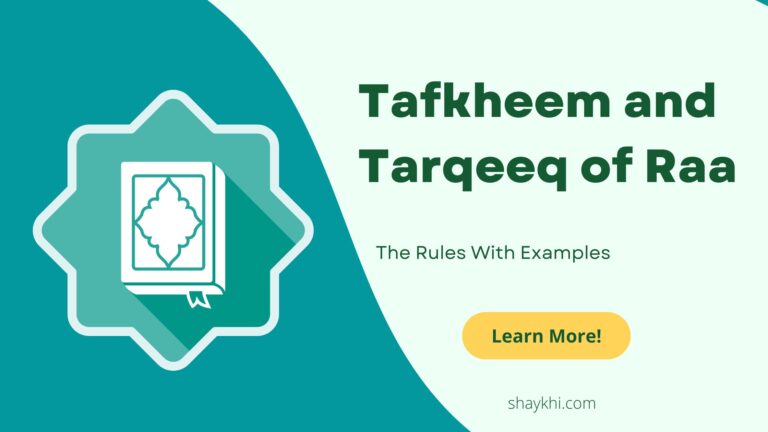
What is Hamzatul Qat? With Worksheet And Comparison With Hamzatul Wasl – Best Guide
Hamzatul Qat (همزة القطع), or the “cutting hamza,” is a fundamental element in Arabic pronunciation that is always pronounced, whether

Hamzatul Qat (همزة القطع), or the “cutting hamza,” is a fundamental element in Arabic pronunciation that is always pronounced, whether

Hamzatul Wasl is among the basic concepts that the reader must know and understand in order to adjust the correct

The letter “Raa” in Tajweed can be pronounced with either Tafkheem (emphasis) or Tarqeeq (lightness), depending on its position, the

Leen letters are a specific category within Arabic and Tajweed phonetics. Leen letters are characterized by the presence of a

Teaching Tajweed to kids involves simplifying rules like Laam Sakinah, Noon Saakinah, Tanween, Meem Saakinah, Shaddah emphasis, Madd rules, and

Throat letters, or Al-Huruf Al-Halqiyah (الحروف الحلقية), are the six Arabic letters (ع, هـ, خ, ح, غ, أ) that are

letters are classified based on their phonetic characteristics into two main types: heavy (Tafkheem) and light (Tarqeeq). Tafkheem letters are

The Arabic language is the language of the Quran, and thus the words of the Quran are composed of Arabic

During your journey of learning the Quran, you will encounter some expressions that refer to specific concepts. It’s important to

In the rich tradition of Quranic recitation, Hafs ‘an Asim stands out among the ten recognized styles, widely practiced and

In Tajweed Warsh, recitations start with Al-Basmalah except for Surah Al-Tawba, using various transitions between surahs. Connected and Disconnected Madd,

Learning the many types of Tajweed rules and delving into the advanced rules of Tajweed unlocks a deeper connection to